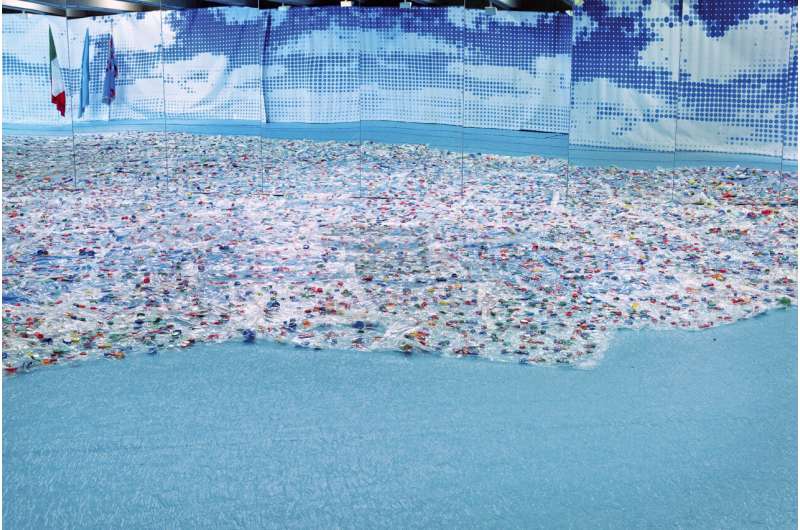May 26, 2022 report
Study of North Pacific 'garbage patch' shows abundance of neuston organisms

A team of researchers from the U.K. and the U.S. has found that in addition to human garbage, the North Pacific "garbage patch" also has an abundance of neuston organisms. In their paper posted on the bioRxiv site, the group describes their study of material in the patch of sea and what sorts of creatures they found living in it.
Prior research has shown that there is an abundance of neuston in the Subtropical North Atlantic Gyre, which forms the Sargasso Sea—parts of which have been labeled the North Atlantic garbage patch, due to the huge amounts of human garbage that has accumulated there. Neuston is a term that has been coined to refer to floating lifeforms on the sea surface, and a gyre is a spiral or vortex, where water turns like clouds in a hurricane only much more slowly. Because the spinning is in the form of a vortex, material at the outer edge is pulled toward the center, which is why neuston and garbage tend to coalesce in them. In this new effort, the researchers wondered if there were similar numbers of neuston in the North Pacific Subtropical Gyre, which has over time come to be called the North Pacific garbage patch (NPGP) due to the large amount of human garbage floating in its center.
The work by the team was called the Vortex Swim—a sailing expedition in the NPGP that lasted for 80 days. The route taken by the I Am Ocean sailing vessel, was plotted using a numerical drift model—the team wanted to see what sorts of creatures were living among the densest parts of the garbage in the patch. As the ship sailed, a trawling device was dragged along behind to capture living creatures. The team also attached a General Oceanics Mechanical Flowmeter to the trawl to measure the volume of water in which the specimens were found.
In all the team collected 22 samples, 12 from inside the central gyre and 10 from outside, for comparison purposes. Specimens in the samples were identified and counted as were garbage samples. In studying the samples, the researchers found that as with the Atlantic Gyre, large numbers of neuston in the NPGP were concentrated near its center. They also found that concentrations of neuston were in the same proportions as the garbage.
More information: Fiona Chong et al, High Concentrations of floating life in the North Pacific Garbage Patch, bioRxiv (2022). DOI: 10.1101/2022.04.26.489631
© 2022 Science X Network


















